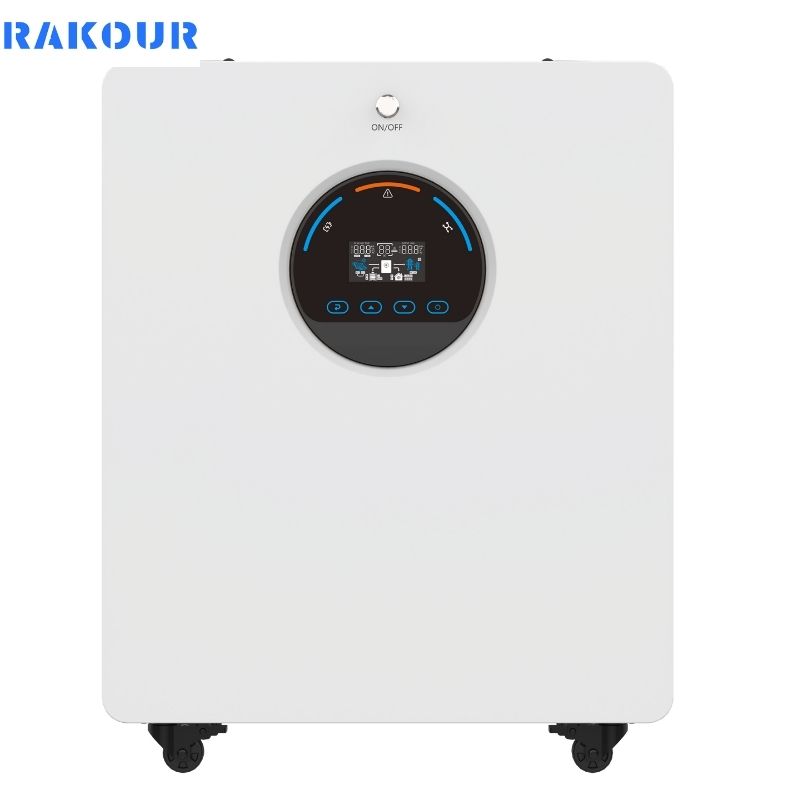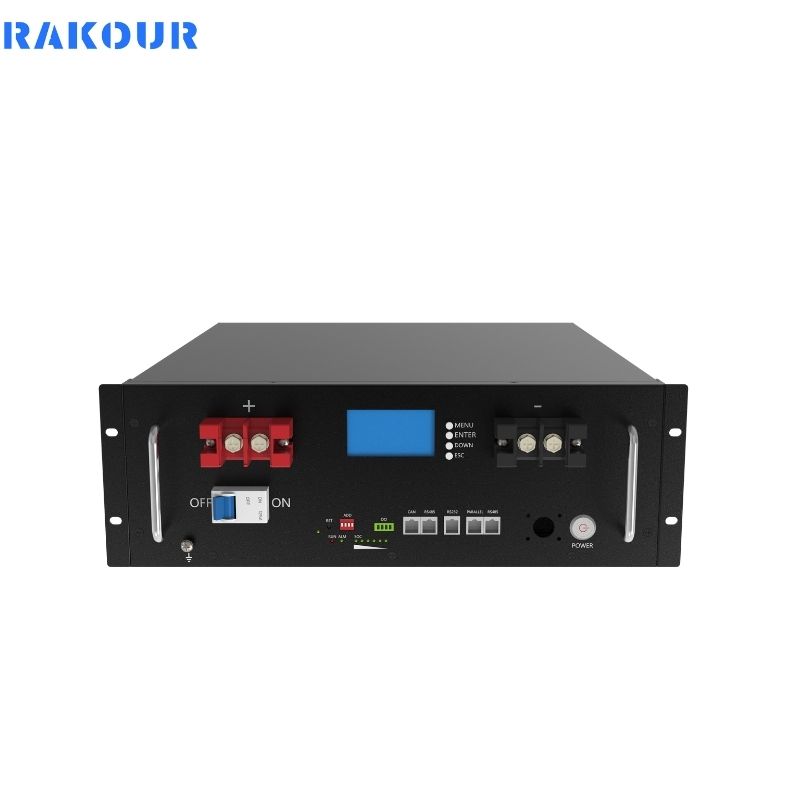Introduction to 12V Lithium Batteries

In the realm of energy storage, 12V lithium batteries have emerged as a game-changer, offering unparalleled efficiency and longevity. These batteries are not just a trend; they represent a significant advancement over traditional battery technologies, particularly in applications requiring deep cycle capabilities. A 12V lithium battery is designed to provide reliable power for various uses, including recreational vehicles (RVs), marine applications, and off-grid solar systems.
One of the standout features of the 12V lithium battery is its impressive depth of discharge (DoD). Unlike traditional AGM (Absorbent Glass Mat) batteries that typically allow for a DoD of 50% to 80%, lithium batteries can be discharged up to 98% without compromising their lifespan. This capability means users can access nearly all the stored energy, making them ideal for situations where every bit of power counts.
Moreover, the 12V 100Ah lithium battery offers rapid charging capabilities—often completing a full charge in just a few hours compared to the 5 to 12 hours required for AGM batteries. This quick turnaround time is crucial for users who rely on their power sources frequently and need minimal downtime.
Another significant advantage of lithium technology is its weight. A 12V 100Ah lithium ion battery can weigh up to 50% less than an equivalent AGM battery, which is particularly beneficial in mobile applications where weight savings can enhance performance and efficiency.
While the initial cost of a 12V battery lithium may be higher than that of AGM options, it’s essential to consider the long-term benefits. With lifespans often exceeding 3,000 cycles at an 80% DoD, these batteries can provide substantial savings over time due to reduced replacement frequency.
For more detailed information on lithium-ion technology and its advantages, you may refer to resources from Battery University.
In summary, the 12V lithium battery offers a compelling combination of performance, efficiency, and longevity that makes it an excellent choice for anyone seeking reliable energy storage solutions. As we explore this comparison further, we will examine how these advantages stack up against traditional AGM batteries.
Understanding 12V AGM Deep Cycle Batteries
AGM deep cycle batteries have been a trusted choice for many years in various applications requiring reliable energy storage. A 12V AGM deep cycle battery utilizes an absorbent glass mat separator that immobilizes the electrolyte, making it spill-proof and vibration-resistant. This design allows for versatility in installation and operation.
One of the primary benefits of AGM batteries is their ability to withstand extreme temperatures better than lithium batteries. They perform reliably in colder climates and can be charged at lower temperatures without significant risk of damage. This characteristic makes them a preferred choice for users operating in harsh environmental conditions.
However, AGM batteries do have limitations that users should consider. Their lifespan typically ranges from 500 to 1,000 cycles, which pales in comparison to the longevity offered by lithium alternatives. Additionally, the depth of discharge for AGM batteries is limited; discharging beyond 50% can lead to irreversible damage. This limitation means that users often need larger capacity banks than they would with lithium options to achieve similar usable power output.
Furthermore, while AGM batteries are generally maintenance-free and resistant to vibration and shock, they are heavier and bulkier than their lithium counterparts. A typical 12V AGM deep cycle battery weighs significantly more than a comparable lithium battery, which can impact overall vehicle or equipment performance.
For a deeper understanding of AGM technology and its characteristics, you can visit Battery University.
In conclusion, while 12V AGM deep cycle batteries offer reliability and robustness under various conditions, their limitations regarding lifespan and depth of discharge make them less appealing compared to modern lithium technology for many users seeking optimal performance.
Comparative Analysis: Lithium vs AGM
When comparing lithium-ion and AGM deep cycle batteries, several critical factors come into play: cost, lifespan, weight, depth of discharge (DoD), charging speed, and overall efficiency.
| Feature | Lithium-ion Batteries | AGM Batteries |
|---|---|---|
| Cost | Higher initial investment (up to 4x) | Lower upfront cost |
| Lifespan | 3,000 – 10,000 cycles | 500 – 1,000 cycles |
| Depth of Discharge (DoD) | Up to 98% | Typically 50% – 80% |
| Charging Speed | Up to 10 times faster | Slower charging times |
| Weight | Approximately 50% lighter | Heavier |
| Maintenance | Minimal; built-in Battery Management System | Maintenance-free but susceptible to overcharging |
From this table, it’s evident that lithium-ion batteries excel in almost every aspect compared to AGM batteries. The higher upfront cost associated with lithium technology is often justified by its longer lifespan and greater efficiency. For instance, while an AGM battery may need replacement every few years due to its limited cycle life, a single 12V 100Ah lithium ion battery can last over a decade with proper care.
Additionally, the ability of lithium batteries to maintain a high DoD allows users to access more usable power without risking damage. This characteristic is particularly beneficial in off-grid applications where maximizing available energy is crucial.
Charging speed is another area where lithium-ion technology shines; faster charging translates into less downtime and greater convenience for users who rely on their power sources frequently.
If you’re considering making the switch or want more information about which battery type suits your needs best, don’t hesitate to reach out! Contact us today for expert advice tailored specifically for your requirements.
For further insights into how 12-volt lithium-ion batteries compare to 12-volt AGM deep cycle batteries, visit our detailed comparison here.
In summary, while both battery types have their merits depending on specific use cases and budget constraints, the advantages offered by lithium-ion batteries make them increasingly popular among consumers looking for long-term solutions.
Performance Metrics
When evaluating the performance metrics of 12V lithium-ion versus AGM deep cycle batteries, several key areas warrant attention: depth of discharge capabilities, charging speed comparison, and efficiency during use.
- Depth of Discharge (DoD)
- Lithium Batteries: Modern lithium-ion technology allows for a DoD of up to 98%. This means users can utilize almost all available capacity without damaging the battery.
- AGM Batteries: In contrast, AGM batteries typically allow only up to 50% DoD before risking damage. This limitation necessitates larger battery banks for equivalent usable power output.
- Charging Speed
- Lithium-Ion Batteries: These can charge significantly faster—up to ten times quicker than AGM options—due to their advanced chemistry and built-in Battery Management Systems (BMS). This rapid charging capability is particularly advantageous in scenarios where time is critical.
- AGM Batteries: While they charge faster than traditional lead-acid batteries, they still lag behind lithium technology in terms of speed.
- Efficiency During Use
- Lithium Batteries: They maintain consistent voltage throughout the discharge cycle until nearly depleted. This ensures that devices receive stable power until the very end.
- AGM Batteries: The voltage drops more significantly as they discharge; thus users may notice reduced performance as the battery drains.
In conclusion, when it comes to performance metrics such as depth of discharge capabilities and charging speed comparison, lithium-ion technology clearly outperforms AGM alternatives. These factors contribute significantly to user satisfaction and overall effectiveness in practical applications.
For additional information on different types of lithium-ion batteries and their specific characteristics—including assembly instructions—you can check out our guide on how do I assemble a 12V lithium battery pack with 3.7V 18650mAh cells.
Environmental Impact and Safety
The environmental impact and safety considerations surrounding battery technologies are crucial factors influencing consumer choices between 12V lithium-ion and AGM deep cycle batteries.
- Environmental Impact
- Lithium-Ion Batteries: While these batteries offer longer lifespans and greater efficiency—which can reduce overall waste—their production involves mining processes that raise environmental concerns. However, advancements in recycling technologies are improving sustainability.
- AGM Batteries: Although they are easier to recycle due to established processes for lead-acid technologies, they still contain lead—a toxic material that poses environmental hazards if not disposed of properly.
- Safety Considerations
- Lithium-Ion Batteries: Generally considered safe due to built-in protection mechanisms like BMS that prevent overcharging and overheating. However, improper handling or manufacturing defects can lead to thermal runaway incidents.
- AGM Batteries: These are safer in terms of handling since they do not emit gases during charging like flooded lead-acid types do; however, they still require proper ventilation during use due to potential hydrogen gas buildup if overcharged.
In summary, both battery types have their environmental impacts and safety considerations. While lithium technology offers superior performance metrics leading towards sustainability through longevity and efficiency improvements over time, proper disposal methods must be emphasized across both categories.
Best Practices for Battery Maintenance
Maintaining your investment in either a 12V lithium-ion or an AGM deep cycle battery is crucial for ensuring longevity and optimal performance. Here are some best practices tailored specifically for each type:
- Lithium-Ion Battery Maintenance
- Regularly monitor state-of-charge levels using built-in BMS indicators.
- Avoid discharging below recommended levels (typically around 20%) unless specified by the manufacturer.
- Store at moderate temperatures; extreme heat or cold can affect performance.
- Ensure compatibility with chargers designed specifically for lithium technology; using incorrect chargers can cause damage or void warranties.
- AGM Battery Maintenance
- Regularly check voltage levels; ensure they remain above recommended thresholds.
- Avoid deep discharges below 50%, as this can shorten lifespan significantly.
- Maintain clean terminals free from corrosion; apply anti-corrosion spray if necessary.
- Store in cool environments away from direct sunlight or heat sources; this helps prolong life expectancy.
By adhering to these best practices tailored towards each type’s unique characteristics while considering factors such as usage patterns will help maximize both performance capabilities while minimizing costs associated with replacements over time!
If you have any questions about maintaining your specific type of battery or want personalized recommendations based on your usage needs—such as whether you should use a lithium battery instead of a regular car battery—feel free to contact us. Our experts are here to help you make informed decisions!
For further details on how voltage affects your battery’s health—including when a 12 volt lithium battery is considered dead—check out our article on at what voltage is a 12 volt lithium battery considered dead.
recommended reading
Conclusion
Choosing between a 12V lithium-ion battery and an AGM deep cycle option ultimately depends on your specific needs and usage patterns.
- If you require lightweight solutions with rapid charging capabilities alongside extended lifespans—especially beneficial in off-grid scenarios—then investing in a quality lithium option may prove worthwhile despite higher upfront costs.
- Conversely, if you prioritize affordability alongside proven reliability under diverse environmental conditions without needing frequent replacements—especially if operating primarily within standard temperature ranges—then an AGM might suit your requirements better!
In conclusion:
- Assess your energy demands carefully against budget constraints while factoring long-term operational costs associated with each type’s maintenance requirements over time.
- Ultimately understanding how these differences align with personal preferences will empower informed decision-making regarding which battery technology best meets individual needs!
Learn How RAKOUR Can help you deploy
future-proof energy
Our team of energy storage experts will take the time to fully understand your business, challenges , and opportunities.

Why LiFePO4 Lithium Battery Is Superior
LiFePO4 lithium batteries offer significant advantages over other lithium chemistries, including enhanced safety, longevity, and

Are lithium deep cycle battery better than agm?
The 12v lithium marine battery is a game-changer for boaters, offering longer lifespans, faster charging

Maintenance Tips and Best Practices for Lithium Golf Cart Batteries
This article provides essential maintenance tips for your 48V lithium golf cart battery. It covers

How 12V Lithium Battery used in Smart Home?
The 12V lithium battery has become essential in smart homes, providing reliable power for various

How many lithium cells does it take to make a 12V battery
The number of lithium cells needed to create a 12V battery varies based on the

Benefits of Switching to Lithium Batteries in Golf Carts
The 48V lithium golf cart battery offers significant advantages over traditional lead-acid batteries, including longer
FAQs















